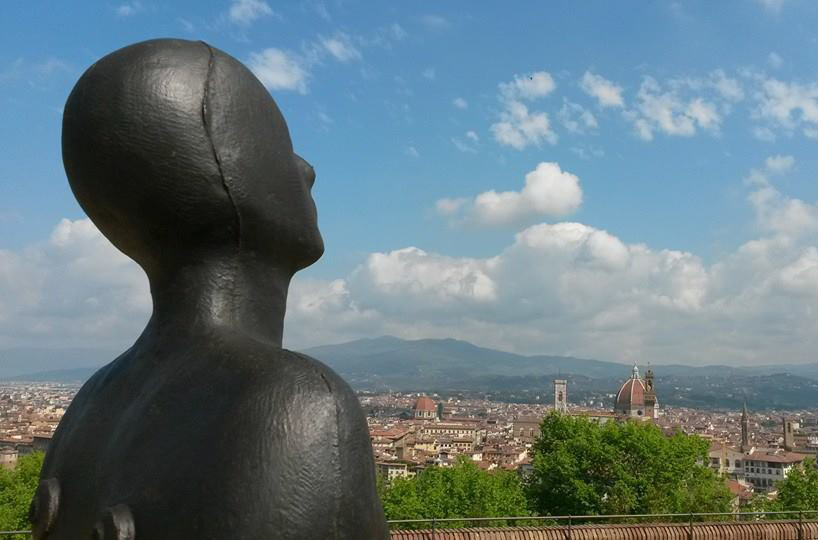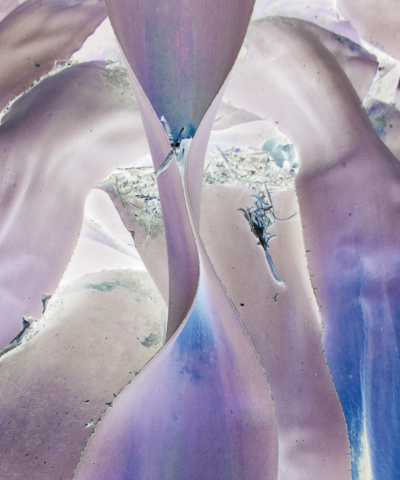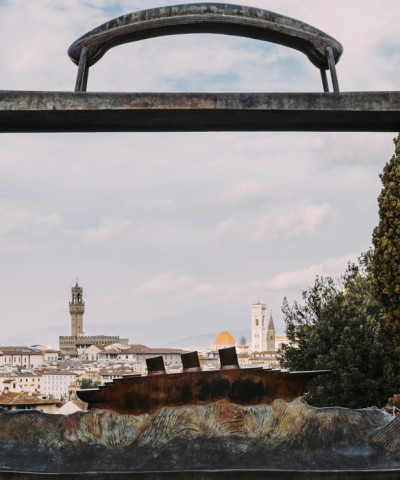Antony Gormley and his Florence exhibition
Until the end of September Gormley's works to Forte Belvedere
Until the end of September, Florence is hosting works by Antony Gormley, one of the most respected sculptors living. The exhibition, entitled Human – curated by Sergio Risaliti and Arabella Natalini – brings together more than a hundred works by Gormley, on display in the inner rooms of the building, on the ramparts, on the steps and terraces, occupying each side of the sixteenth-century fortress with its stunning views of the city and surrounding hills.
For our magazine, an extract of the exclusive interview with Antony Gormley by Arabella Natalini included in the volume Antony Gormley: Human, Forma Edizioni.
I would like to ask you about the specificity of making a new show at the Forte Belvedere.(…) And how would you describe your responsibility towards visitors and those from Florence in particular?
This building, connected to the Boboli, to the Pitti Palace and Palazzo Vecchio, is a very obvious statement of control as much as of defence.
As you say, it was never the site of war and never needed to be defended, so in some senses it has an emblematic function, the suggestion that you should feel through its presence the protection of (but also the overseeing power of) the family that caused it to be made. It is located in Oltrarno, across the water, and watches the city that it controls but is also fearful of. (…)
My responsibility to the Florentine citizen is for this building to become as open as possible and engage every person, from child to older person, in some kind of imaginative exploration.(…)
Starting from this place, from its symbolic value and its architecture so marked by its proportions, you decided to realise a project with over one hundred life-size human figures. Scale is something that has always interested you, something that you master, moving from small ‘objects’ to architectonic dimensions, always maintaining as a starting point the human scale, even when you go ‘large’.
Why is the work life-size?
I think that the critical thing here was to sense the scale, mass and relationship of the built spaces of the Forte to our bodies.(...)
I wanted the sculpture to re-enforce our human scale on its lateral terraces in relation to these distances and distant habitats of the city, while being conscious of the scale of the Forte itself.
I hope that some of the power of its architecture has transferred from the building to my made bodies. I have tried to transfer tectonic masses to the body and I am hoping that people will feel this on an intimate level.
You often refer to architecture as an expansion of the body. Speaking about the distribution of your figures, of their attentive and judicial placement in the extensive grounds of the Belvedere, you employ the term ‘acupuncture’. In what sense is it acupuncture? Do you intercept neuralgic points to heal a ‘dead’ artefact (emptied of its functions) to give back to it a new vital energy?
I use the word acupuncture in the sense of revitalising the clogged energy of a site.
Here is a place that can now be seen as an artefact in the manner of a pyramid, labyrinth or catacomb, at the intersection of geology and human ingenuity. It can help us tune into our own body-response to a particular built habitat. I consider all architecture as the second body.
The decision not to use this as a platform on which to make a monumental intervention was simply to treat the Forte itself as worthy of exploration.
Acupuncture refers to activating the closed and open zones of the Forte but also the somatic response of the viewer.
In the ‘Paragone’ among the arts, sculpture has always been considered secondary in comparison to painting, due to its strongly ‘material nature.( …) What is sculpture good for anyway?
In a time of the instant and ubiquitous production of images which gratify a sense of self-existence but are instantly obsolete, sculpture can re-affirm first-hand experience. Sculpture is good for reminding us of our dependency, provisionality and insufficiency, as well as being good for all the things that it was good for in the Renaissance: beauty, pride, sexuality, status.
All of those latter possibilities are less significant than the greatest challenge facing our species which asks where human nature fits into nature at a large.











